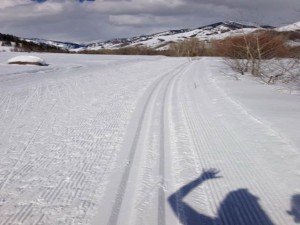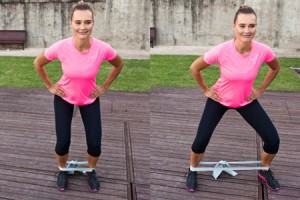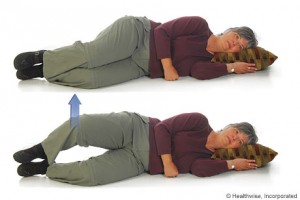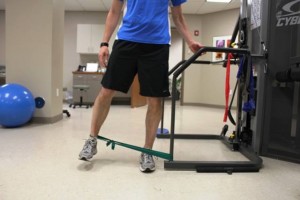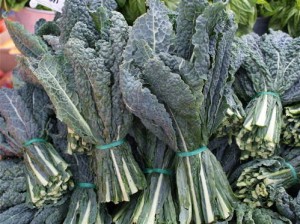Hello, Gentle Reader,
In end every post with “be well, do well and Keep Moving.” But I spend most of my day at the computer, sitting for hours. What’s to be done? You probably don’t move all day at your work, either. I was talking with my hair stylist, suggesting a trip for her family to La Push and Second Beach, and her first question was “How long does it take to get there?” Riding in the car for anything over an hour is too much sitting for her. She moves all day long. So does my renter, a finish carpenter working long hours on high end construction sites. The last thing he wants to do at the end of the day is an exercise program. He is constantly in motion on his job.
We are all different in our daily routine. If we want to make a change to our weight, or our stamina, or the comfort in our joints, we need to change it up. Movement that is different from the routine is the movement that makes a difference in your health quotient. Keep Moving means different things for different life styles.
Here’s my routine:
6:00 or so Up, stumble into the kitchen to draw and heat a 16 ounce glass of water and squeeze half a lemon in it. This wakes up my stomach and helps digestion.
6:30 after a relaxed complete bowel movement (chewing the warm lemon water helps this), I lie down with the Back2Life machine, which gently lifts the pelvis in a passive Feldenkrais type movement.
6:45 a 10 minute yoga routine which includes Cat-Cow movements (see a past post for pictures), Downdog and calf stretches.
7:15 Meditation and early morning writing.
7:40 Breakfast and reading
8:40 approximately, in the office at the computer.
10:15 break for tea and while the kettle boils, visit the chickens to feed them and collect eggs.
More sitting.
What I do is plot the walking I will do each day. Today I walk a mile to the Uptown Velvet Foam coffee emporium where I will write for a couple hours. The walk takes me down a steep hill, up another very steep hill and getting home it is the reverse.
How about you? Can you fit a walk in that includes stairs? One of the recommended ways to avoid osteoporosis is to climb 200 steps everyday, carrying 10 lbs of weight.
Move to Improve
What are we talking about here?
Everybody knows we need to be physically active. But if we have arthritis and hurt much of the time, wouldn’t it be better just to find a comfortable position, take our medication and not invite more pain. Movement makes you hurt, right?
Not necessarily. In fact the opposite is true. Trust me. Get up and move. Movement can have specific benefits for people with rheumatic or musculoskeletal disease (RMDs). Those joints that hurt with every step and every bend, will actually hurt more and more WITHOUT moving them. To keep the motion you have, you must move. Moving also improves circulation and will help keep other degenerative diseases at bay.
So what can I do? The most appropriate form of activity will depend on a number of factors including the type of RMD you have. Which joints are affected and how bad is the joint damage? Articles like this always tell you it is important to consult your doctor or physiotherapist about the type of exercise you need therapeutically, as well as the type of activities you enjoy doing to keep you healthy. One friend who was just one step from a wheel chair because of her arthritis, did not like any activity. Her chiropractor told her she just had to find an activity she loved. She stumbled on a scull, a single racing shell. She fell in love with the water and rowing. Got off all her medication. Began taking a prescribed regimen of food supplements from Shaklee Corp and went on to win world championships in her age group.
Find something you love to do and begin, slowly with guidance. Don’t stop.
Let’s see what physical activity is. Physical activity is any form of daily activity that involves movement, rather than sitting or lying still. This could include playing with children, doing housework, walking the dog, gardening etc. Being physically active can release stiffness and lift your mood. I find that the playing, housework, gardening activities often lead to more stiffness while some form of regulated, prescribed exercise reverses or controls those negative results from just any daily physical activity. In other words, exercise can make the fun stuff easier.
The term exercise describes planned, structured and repetitive movements that are performed frequently, at a given intensity and for a set duration of time. Exercise can be therapeutic, such as in rehabilitation, or taken as an enjoyable way of improving or maintaining:
§ muscular strength and endurance
§ flexibility and joint mobility
§ motor functions including coordination and balance
§ aerobic capacity and increased energy expenditure, which can help with weight control
§ bone mineralisation contributing to the prevention of osteoporosis
§ mood and self-esteem leading to increased positive attitude
Level of exercise
You have to decide what you can handle. One person may have an easy time doing water aerobics while another will have to begin slowly and increase intensity. For example, walking, cycling or swimming at a gentle pace (low intensity), might have an aerobic effect (increase your heart rate and breathing) for some people, while others would need to exercise at a moderate to high intensity to experience the same effect. How old are you? How is your general state of health? How advanced is your disease? How regularly have you been exercising? Are you carrying too much weight? Begin at a level of exercise that works for you.
Starting out
Always begin gently and build up slowly over time. It is better to do little and often than to try and overdo things and to push yourself too hard when you start exercising. So many people begin with fervor and peter out after the third day or so. I believe that dietary changes need to accompany a new exercise program to support your recovery. Here is an article about foods and supplements that help.
If you do need to stop exercising for any reason, always start again gently and build up slowly. When you reach your desired level of function, you will need to keep up regular activities to maintain this level.
How much exercise
When you repeat activities regularly your body will adapt over time and you will find you can do more with less effort. You may need to change up your program to continue improvement. People hit a plateau and get frustrated because they are not improving beyond a certain point. Make little alterations in your routine and your muscles will respond. It’s the surprise factor in training.
Really. Regular exercise slows, or may even prevent loss of function due to disease progression.
Ideally, do stretching/flexibility exercises every day, muscle strengthening and endurance exercises two to three times a week and some form of aerobic exercise for 20 minutes three times a week. Mix it up.
The key is to find things you enjoy doing so that being active is something you look forward to and becomes part of your daily life.
Did you know?
The word ‘fit’ comes from:
Frequency – how regularly you exercise
Intensity – how hard you exercise
Time – how long you exercise
Now the word fitness is used to describe health and the ability to meet the demands of a physical task.
What are we talking about when we say exercise?
Aerobic / cardiovascular – Exercise that raises the heart rate and breathing, e.g. walking, cycling, swimming, dancing etc. at a moderate or high intensity
Balance – The ability to control the body’s position when either stationary or moving
Endurance – How long you are able to exercise at low, medium or high intensity
Flexibility – The ability of muscles to stretch. Stretching muscles helps to keep them supple and relieves stiffness
High impact – Exercises where the body weight impacts forcefully against a surface, for example running or jumping
Low impact – Exercises where there is minimal impact through the joints and pelvic floor or where the body is supported whilst exercising, e.g riding a bicycle or swimming
Mobility – The ability of joints to move through a range of motion
Posture – Good body alignment
Strength – The extent to which muscles can exert force by contracting against resistance (e.g. free or fixed weights, bands, moving in water etc)
Weight bearing joints – Joints that support the weight of your body against gravity when you are upright, i.e. your spine, hips, knees, feet and ankles
Weight bearing exercises – Exercises where your body is working or moving against gravity, for example walking (swimming is non-weight bearing because the water supports your body weight) Weight bearing exercises also help maintain bone density and reduce the risk of osteoporosis
I went to the Arthritis Foundation. Their website has excellent articles about taking control. This posting borrows from their pages.
Be well, Do well and Keep Moving, Betsy
Betsy Bell’s Health4u
206 933 1889
Betsy@hihohealth.com
